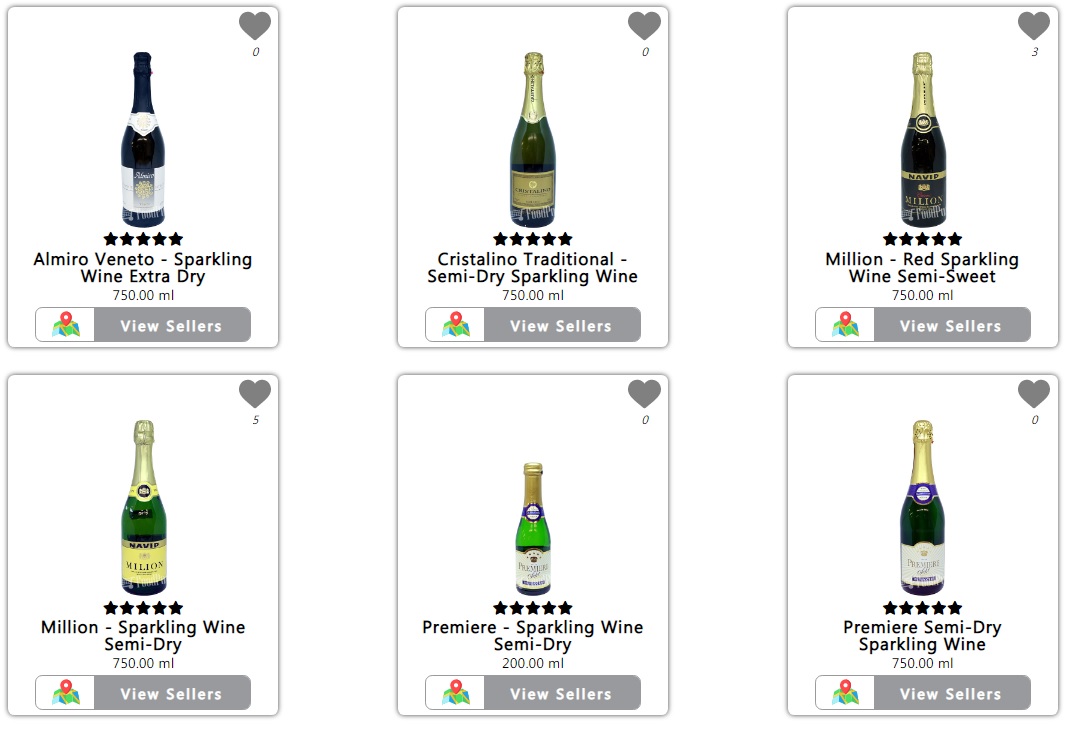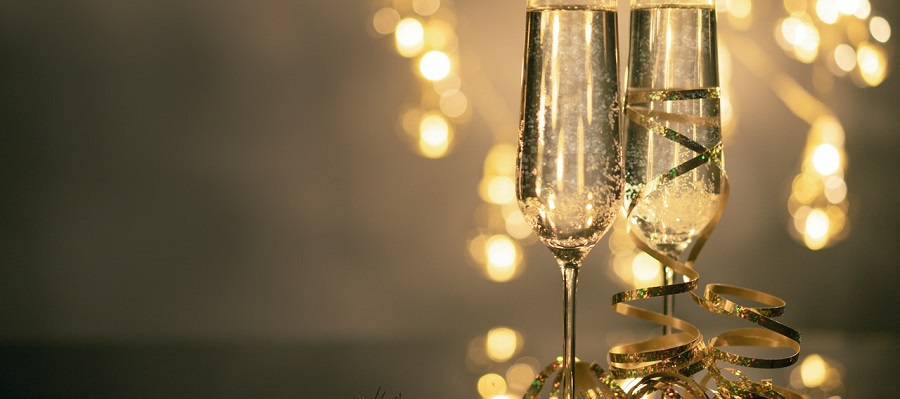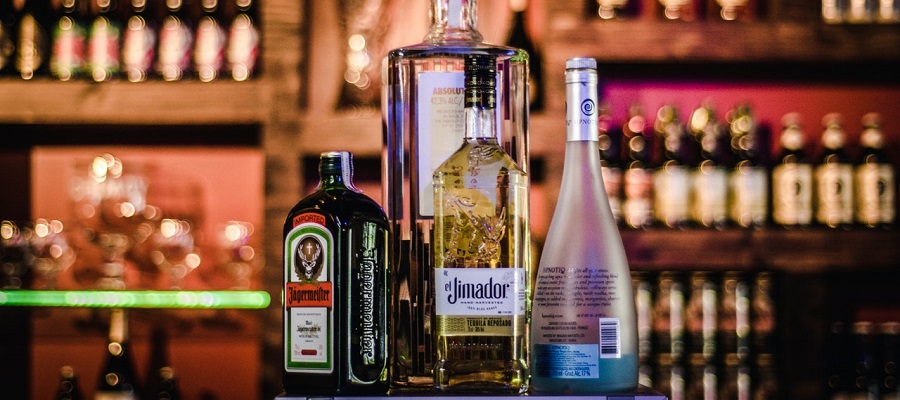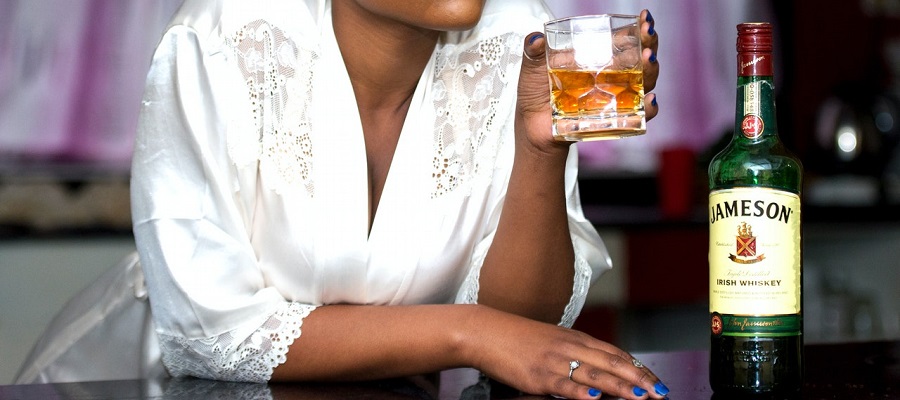Statistically speaking, every European drinks just under three and a half liters of sparkling wine per year. Nevertheless, hardly anyone knows anything about the production and varieties of this sparkling drink. We give you an overview.
Statistically speaking, every European drinks just under three and a half liters of sparkling wine per year. Even though consumption has been falling in this country for years, this makes us the world leader. Nevertheless, many people are unaware of the complex production process and the different varieties of this sparkling beverage. To make it easier to choose sparkling wine or champagne for the upcoming holidays, here is a brief overview.
Where you can buy Sparkling Wine and Champagne
Visit our food Index database and search for sparkling wine or champagne of your choice. We have plenty of sellers listed.

Sparkling wines - worldwide trend, country-specific characteristics
Sparkling wine is now produced in all wine-producing regions of the world. Sparkling wine is defined as a sparkling wine that has at least 10 percent alcohol by volume and a pressure of 3 bars. This also includes sparkling wine - regardless of the manufacturing process used to produce it. However, sparkling wines sometimes differ enormously in quality, taste and price. Some beverages produced outside the Champagne region in France are on a par with luxury sparkling wines.
Champagne
Champagne is undoubtedly the king of sparkling wines and developed from the 19th century worldwide as a luxury drink. Champagne owes its origin rather to chance: vintners had once bottled wine very early after the harvest to transport it to England. The wine thus fermented unintentionally a second time without - as is usual in wine production - the resulting carbonic acid being able to escape. The second fermentation turned the wine into sparkling wine. A Benedictine monk named Dom Perignon then invented the controlled second fermentation, which was carried out by adding a precisely dosed sugar-yeast solution and made it possible to transport the sparkling wine in bottles without them exploding: champagne was born. A good sparkling wine is therefore the second fermentation - also called bottle fermentation - because it provides the fine bubbly, natural carbonic acid.
However, a sparkling wine may only be called Champagne under certain conditions. The grapes - mainly of the Pinot Noir, Pinot Meunier and Chardonnay varieties - must come from a specially defined growing region in Champagne. Special growing regulations apply, such as planting density, yield restriction and hand harvesting. Champagne must be produced by bottle fermentation and has a minimum aging period.
Production in bottle fermentation
Classical bottle fermentation is also found on sparkling wine labels under the designation Méthode Champenoise, Méthode Traditionnelle or Metodo Classico. It produces a particularly fine carbonic acid, but is also the most complex and therefore most expensive method of sparkling wine production.
This is because after the first fermentation, in which the must extracted from the grapes is fermented into the base wine, a second fermentation takes place. In this process, a mixture of sugar solution and yeast, called tirage, is added to the wine. The wine is then put into bottles, which are corked. This is where the carbonic acid is produced. Once the sugar is completely broken down, fermentation ends. Now the wine must be stored on the dead yeast in the bottle. In the case of champagne, 15 months are prescribed for this, and even 36 months for vintage champagne.
The bottles are riddled to gradually collect the yeast deposit in the neck of the bottle. By hand or mechanically, the bottles are given slight rotations around their own axis and are placed in an increasingly steep position.
To remove the yeast from the necks of the bottles, the wine is "disgorged". The necks of the bottles are frozen, the corks are removed with a quick movement and the frozen yeast shoots out. Now the bottles must be refilled and the sugar content of the sparkling wine adjusted. This reduces the acidity. For this purpose, a mixture of identical wines and sugar solution is added, the so-called "dosage". The bottles are then corked again. The pressure on the bottles in classic bottle fermentation is 5 to 7 bars.
Cremant, Cava and Spumante
Sparkling wines are also produced in bottle fermentation outside of Champagne. They are in no way inferior to Champagne, but must bear a different name because of trademark protection. In the rest of France, they therefore trade as Cremant. Strict rules also apply to the production of Cremant, such as hand-picking the grapes. The grape varieties are the same as for Champagne; single-varietal Cremants made from Chardonnay are called "Blanc de Blanc," those made from Pinot Noir "Blanc de Noirs."
Cava is the Spanish term for sparkling wines. Its production is subject to similarly strict regulations as champagne. Cava is available in 3 quality levels. The simple Cava lies at least 9 months on the yeast, a Reserva at least 18 months and a Grand Reserva 30 months. Most commonly used grapes in cava are Parellada, Macabeo and Yarel-Io.
Italy's quality sparkling wine is called Spumante. The designation "DOC" (Denominazione di origine controllata) indicates that it comes from a specific production area. The best-known spumante is probably Prosecco, produced exclusively in Veneto from the Glera grape variety.
Winery sparkling wine
The German counterpart to Cremant and Co. is the Winzersekt, recognizable on the label by the "Sekt b.A." and printed winemaker or winery name. These sparkling wines are made from 100 percent of the winemaker's grapes and are aged on their lees for at least 9 months, often longer. Based on high-quality base wines, perfectly crafted sparkling wines are on a par with champagnes in terms of taste, but are priced much more moderately.
Mass-produced sparkling wine
Sparkling wines of the simpler kind, recognizable on the back label by the statement "Made in Germany", are usually made from plain wines imported from Southern Europe. Production is completely automated, takes place in a tank fermentation process and produces sparkling wines with a consistent taste, which are sold in the lower price segment at the large supermarket chains and discounters.
One level above this is quality sparkling wine, which can be recognized by the label "Deutscher Sekt". For these sparkling wines, the grapes come from Germany and are also processed here. The production also takes place in tank fermentation.
Production in tank fermentation
In this method, the second fermentation takes place not in bottles, but in large tanks. These are usually made of stainless steel and have a capacity of up to 200,000 liters. In them, base wine and tirage are mixed and undergo the second fermentation. Once the resulting carbon dioxide has generated sufficient pressure, the yeast is separated from the wine by means of a filter, and the wine is immediately mixed with the wine-sugar solution and drawn into bottles. Sparkling wines produced in this way leave a stronger yeast impression and are more cost effective and therefore less expensive. The bottle pressure here is 2 to 4 bars.
Sparkling wine or secco
The most important characteristic of sparkling wines is the origin of the carbonic acid. It is not produced by the second fermentation, but is added by carbonation. That is why sparkling wines produced in this way are called semi-sparkling wines. Examples are "Prosecco Frizzante" or "Sparkling Shiraz". The base wines for sparkling wines come from any origin. Sparkling wine is easy to recognize because, unlike real sparkling wines, it is bottled in conventional wine bottles.
Production by carbonation
Carbonation, also called the impregnation process, involves adding carbon dioxide to the wine under pressure. This simple process is used for plain sparkling wines. The bottle pressure here is 3 bars.
Practical tips for the sparkling drinks:
If you are afraid that the cork will fly across the room, it is best to use a tea towel to twist it out and place it over the cork. To open the bottle, first remove the tinfoil capsule or the ribbon in the case of Prosecco. The bottle is then held with one hand and the wire loop is untwisted with the other. While the bottle is at a 45-degree angle in one hand, the other carefully twists out the cork. The ideal drinking temperature is between 9 and 11 degrees.
The right glass
Particularly tall glasses in the shape of a flute or tulip are suitable for sparkling wine. Pour to a height of about two-thirds so that the aroma can develop well and the sparkling wine can sparkle beautifully.
Do not keep leftovers for long
If you do not empty your sparkling wine completely and want to store the rest in the refrigerator, you should not do this for more than 24 hours. To close the bottle, a commercially available tension cap is best suited. Silver spoons in or aluminum foil over the neck of the bottle have proven to be less good, as they allow a lot of carbon dioxide to escape and make the sparkling wine stale.
Does long storage make sense?
Sparkling wine, unlike many other alcoholic beverages, does not improve with storage. So you should buy it where sparkling wine is regularly moved. Bottles are best stored upright, in a dark room at about 15 degrees, and no longer than two years.
Dryness and sugar content
Like any other alcoholic beverage, sparkling wines have a fair amount of calories. These come from the residual sugar content of the sparkling wine. And this, in turn, manufacturers hide in the degree of dryness of the sparkling wine indicated on the label in French.
- Extra Brut (extraherb, with 0 to 6 g of residual sugar per liter) are particularly dry sparkling wines with minimal sugar.
- Brut (tart, with 0 to 12 g of residual sugar) are the most frequently classified sparkling wines - dry and with little sugar.
- Extra Dry (extra dry, with 12 to 17 grams of residual sugar) is often read in Prosecci and is a further gradation in the perception of sugar. However, the sparkling wines can still be described as dry.
- Dry (dry, with 17 to 32 g of residual sugar). Here you can clearly feel the sugar, the designation is somewhat misleading.
- Medium-dry or demi-sec (off-dry, with 32 to 50 grams of residual sugar) are wines with significant sweetness, best drunk with dessert.
- Doux (sweet, with more than 50 g of residual sugar) are classic dessert wines.
Helpful criteria for the purchase decision
There are some quality factors for sparkling wine that you should pay attention to when buying. The more defined the origin of the wine, the higher the wine quality. Carbonic acid should not be added, but should be the result of the second fermentation in the bottle or tank. If the carbonic acid is only added, it can be recognized by bottling in wine bottles. And also the duration of maturation is decisive for a good sparkling wine. Longer matured in the bottle are in any case the better choice.
How much can champagne cost?
You can buy an elegant champagne for as little as 30 euros - there are hardly any upper limits to the price. German Winzersekte and Cremants are available from about 15 euros, good Cava Grand Reserva from about 20 euros and a better Prosecco from about 20 euros. It is better to keep your hands off cheap sparkling wines of undefinable origin. In the low-priced segment, you can get good sparkling wine from the vintner for as little as five euros.
Stiftung Warentest compared 21 sparkling wines from bottle and tank fermentation in its magazine (12/2017). The test winner from the Schlumberger winery is available for 14 euros in supermarkets, the runner-up, a Cremant Brut Dargent for as little as 6.75 euros as well. Rotkäppchen and the discounters do not have to hide behind Henkell, Mumm and Freixenet, Faber fails the test. The test winners show: Quality does not have to be expensive, even with sparkling wine.
Conclusion
Champagne is still considered a luxury drink today - despite its ubiquity in terms of volume and media. But there are alternatives: Good quality artisanal sparkling wines from family-run wineries are often the better choice - and the more cost-effective one at that.


